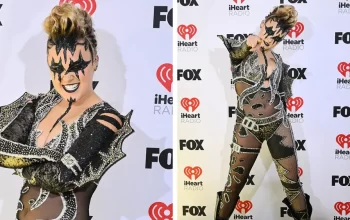Kaitlyn Sandvik
Arts, Entertainment, and Technology
@ksandvikcourant

The absurd graffiti poetry and seemingly scrutinizing works of artist Dan Colen haunt the average observer with a range of mixed media creations which often reflect urban subcultures and feature household items. Dan has been deemed the “bad boy” of the New York City art scene with his work collection evolving rigorously based upon the metamorphosis of his personal narrative. His work is notorious for it’s polarities and twisted repurposing of objects.

His solo retrospective exhibit from 2014 was a response to the death of a friend and fellow member of the Warhol’s Children collective, Dash Snow, entitled, “Help!” and was featured at The Brant Foundation in Greenwich. A colossal element to the process of curating and creating the by-appointment-only art space was migrating pieces with an urban muse to Connecticut. However, it is in the union of his range of simplistic and intricate works that the suburban environment is evaded by viewers.
The final result was a two floor journey through Colen and his rebellious lifestyle that morphed through the entrance and exit of people in his life. The concluding piece is outside and is almost the resolution for the pain and grief Colen confronted with the death of Dash. The piece which Dan claims was incredibly cathartic to create consists of two box trucks that have run into the ground and resembles oversized headstones and is entitled, “At Least They Died Together (After Dash)”.

Juxtaposition of color and texture is a common pattern within the constructed works of Colen. He offers spirited and playful pieces that bombard viewers with a bubblegum color palette and perverse manipulation of the everyday object, while also starving the canvas, at times, with works that depict layers of his interpretation of bird fecal matter. Indeed, one of his pieces made from gum is intended to walk the line between what is abstract versus what is pictorial. The gum may appear as an impressionist painting while his own replication of bird waste may look truly like bird waste.

The result of vibrant works and less than colorful pieces is a balance that Colen strives for. While he acknowledges the grime of life, there is an optimism in his aesthetic. While themes presented in the text featured on his work might be cynical and representative of a harsh reality, the collaged platform that these ideas are displayed upon typically offers an abundance of fonts or color.
The prominent dichotomy between human goodness and inner corruption is depicted in Colen’s rock statues that are drenched in graffiti art, newspaper clippings, and doodles. Colen transforms the average “Missing” flyers and advertisements into a commentary on the violence-obsessed society in which we live through drawing guns and crude matter on a sea over the images. Youthful faces on advertisements are demonized with defacing and grand statements on the decline of Western civilization among other notes on social issues scribbled in black writing.

Yet, the most crushing of his work is highly symbolic of the loss of Dash. Snow had died from substance abuse which was the catalyst for his termination of use. A 2014 piece that had tremendous emotional effect on my visit to the exhibit was a vast curtain of glass tubes which otherwise are crack pipes with petite fabric flowers within them, entitled,“Love Roses”. This curtain lines the stairway to the second floor of the exhibit which featured confetti-esque paintings. The simple and beautiful pieces entitled, “Spinal Remains” from 2012 and a more recent, “Dig Up Her Bones” from 2014 transmit a bittersweet mood and reflection on the cause of death for Dash.

An elaborate piece entitled, “Infinite Jest” from 2013 that was featured in the “Help!” show portrayed a large bird nest crafted from spare pieces of fence and metal from his upstate farm and incorporated live birds. The spectacle captured the ethos of Colen, because while the nest was a cold structure of scrap metal, it had been made a comfortable home by cheery yellow and orange canaries. The overall show which explored innocence and a jubilance which clashed with a serious fragility and reality presented, from his glass blown whoopee cushions, to a chandelier constructed from abandoned bicycles he collected in New York City.
The entire exhibit requires onlookers to transcend their state as merely viewers and calls upon the individual to recall, just as Dan did, all the emotion that results from the trials and relationships that occur between life and death. The combination of experimentation and exploration of contrasting elements featured in the “Help!” retrospective certainly was a profound tribute to a phenomenal artist, Dash Snow, by a friend and fellow creative, the rebellious renegade, Dan Colen.



